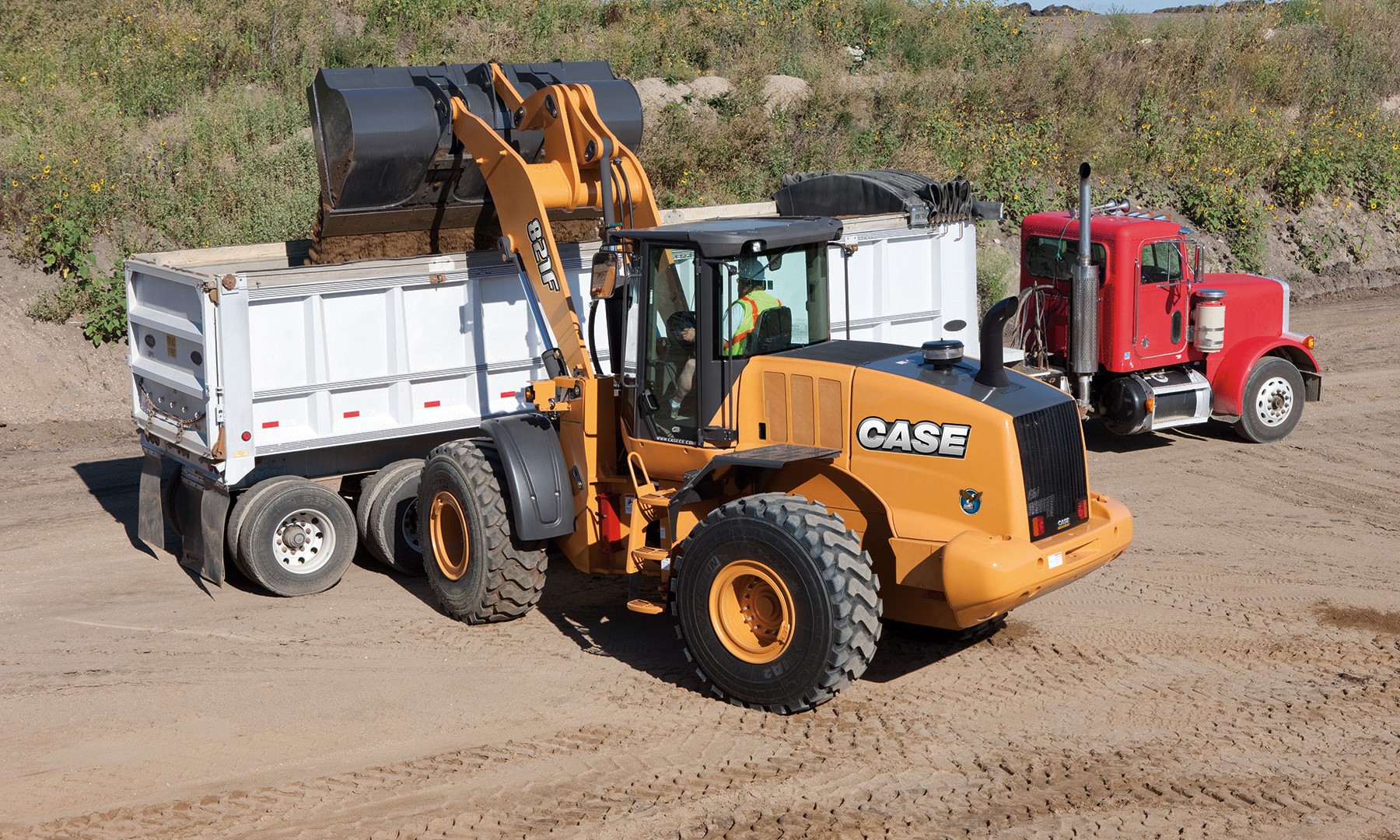As manufacturers begin factory-filling equipment with OAT coolant, it’s important to note coolant type before re-filling and understand the benefits compared to conventional coolant.
By Brad Stemper, solutions marketing manager, CASE Construction Equipment, and Pavan Manthena, project engineer, CNH Industrial.
Tier 4 diesel engine technology has changed the way many construction equipment systems run – and that includes engine coolant. Tier 4 engine advances generally create higher combustion temperatures and cylinder pressures. Coolant must resist deposit buildup and other issues that can occur rapidly under these conditions.
As a result, manufacturers have begun shipping Tier 4 Final machines factory filled with Organic Acid Technology (OAT) coolant (a form of extended life coolant, or ELC). By way of example, CASE began shipping select machines with this coolant in December 2013 and will expand it across further product lines through 2016. All CASE Tier 4 Final machines with FPT engines in the ≥ 56 kW emissions category will have OAT coolant when they leave the factory. The factory will phase-in OAT coolant at varying intervals through other emissions categories.
Whether a machine has been factory shipped with an OAT coolant can be easily identified by a coolant formulation label on the coolant reservoir.
This coolant is not new – it’s been widely used and proven effective in on-road trucking and power generation applications for many years now – but its standardization from the factory as it relates to construction equipment will increase as more Tier 4 Final machines are introduced. It’s important for fleet managers, maintenance personnel and operators to identify machines filled with OAT coolant, understand the advantages that this coolant provides and understand the dangers of mixing this coolant with conventional or off-brand coolant (don’t do it).
What is OAT?
OAT coolant features new corrosion inhibitors that account for approximately less than 5 percent of its total volume. The remaining 95 percent is made of a similar ethylene glycol mixture as conventional coolants. The corrosion inhibitors in OAT coolant are carbon-based, opposed to nitrite inhibitors in conventional coolants – and that’s the difference.
Conventional corrosion inhibitors in coolant provide excellent protection, but are more prone to degradation over the life of service. Silicates are also found to cause gel formation issues over time. New OAT coolant uses organic salts for corrosion protection that deplete at a much slower rate compared to conventional coolant. The new carbon-based technology provides a harder, more protective layer that protects against cavitation in the harsher operating environment.
Better Protection, Extended Intervals
The primary benefit of OAT is the increased protection in the engine and overall better coolant performance over its service life. OAT coolants help eliminate fouling/deposits that prevent heat transfer from the metal to the coolant, acting almost as an insulator that prevents the coolant from doing its job. Without these deposits, heat exchange is maintained over longer periods of time, improving overall cooling performance.
The second major benefit is an extended service life that, conservatively, doubles the life of conventional coolants. Older coolant formulations provide a useful service life ranging from 1,200 to 2,000 hours (or two years, whichever comes first). OAT coolants can often meet or exceed a range of 4,000 hours/4 years to 6,000 hours/6 years in heavy equipment applications (always reference the machine’s owner’s manual). This extended service life helps simplify maintenance and reduces waste and the hassle of disposing/recycling engine coolants.
What You Need to Know
Machines factory filled with OAT coolant will feature a decal near the fill point that clearly indicates the use of OAT coolant. It will also identify the factory filled brand/formulation. This is critical on two fronts: conventional coolants cannot be mixed with OAT coolants, and other brands/formulations of OAT coolants may cause problems if they do not match the material spec of the factory coolant. Mixing conventional or off-brand OAT coolant with the existing factory filled coolant will diminish the extended life properties of that coolant. It may also cause other compatibility issues.
Customers can expect the new OAT coolant to have a different color compared to the traditional green coolant color. Depending on coolant provider, colors may vary. If you have any doubt about the coolant in your machine, look for the appropriate label or contact your dealer’s service department.
OAT coolants are compatible with older engine technologies and will provide extended protection and service life, but it varies from manufacturer to manufacturer as to which models will operate effectively with OAT. Generally speaking, most Tier 3 and Tier 4 models are compatible with OAT, and some Tier 2 models are also compatible.
If you decide to change from one coolant to another, it’s recommended to flush the system three times before adding the new coolant. This will eliminate any chance of contamination.
Also critical: only use distilled or de-ionized water when mixing coolant from concentrate. Using hard water, soft water or any water with salt content will lower the coolant’s protective capabilities. If distilled or de-ionized water is not available, check with the manufacturer or on the label for acceptable water properties for mixing.
All Tier 4 Final CASE models shipping with OAT coolant will feature Actifull™ OT Extended Life Coolant. Ask your dealer service or parts representative for additional information and, when in doubt, always consult your owner’s manual.

